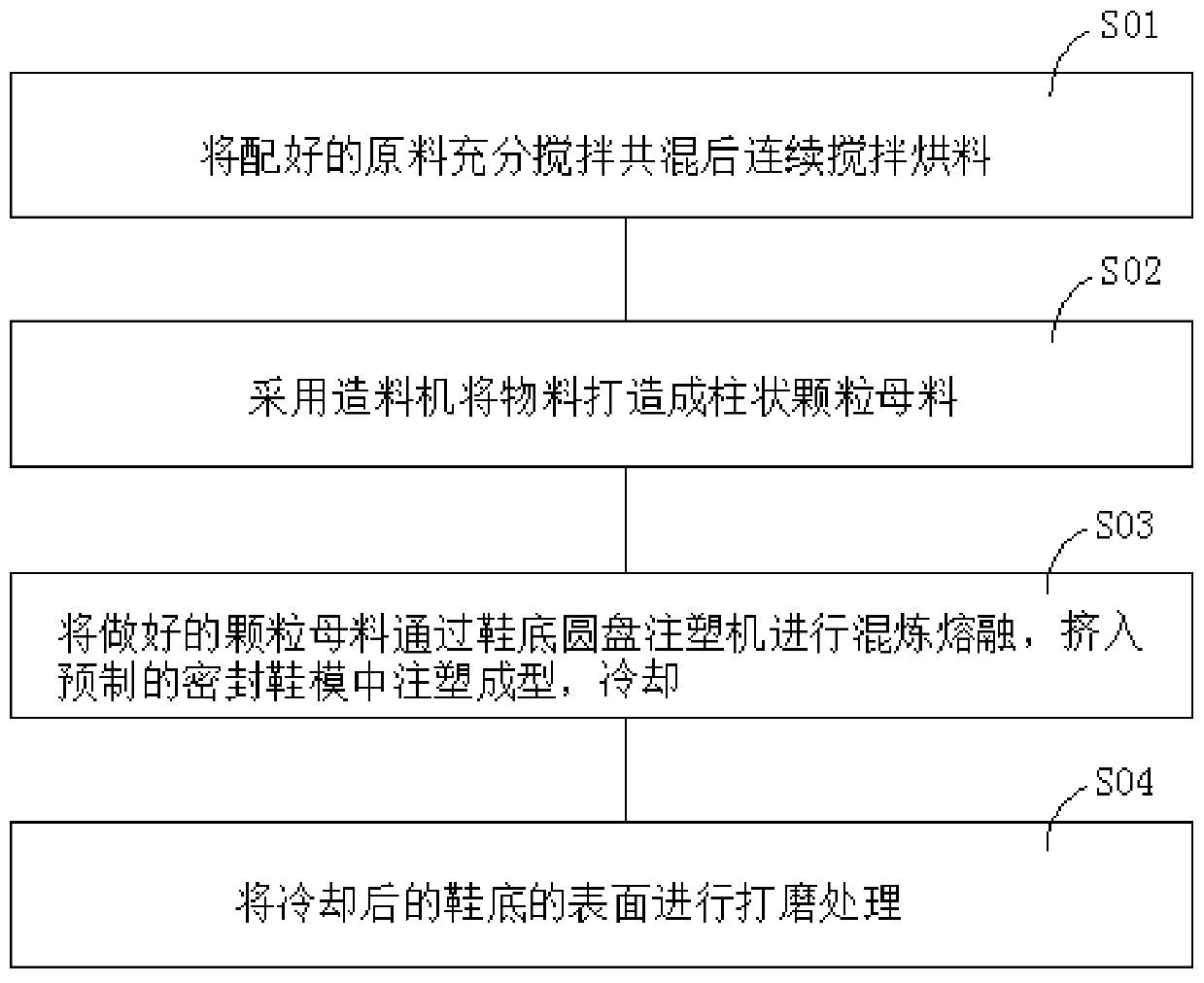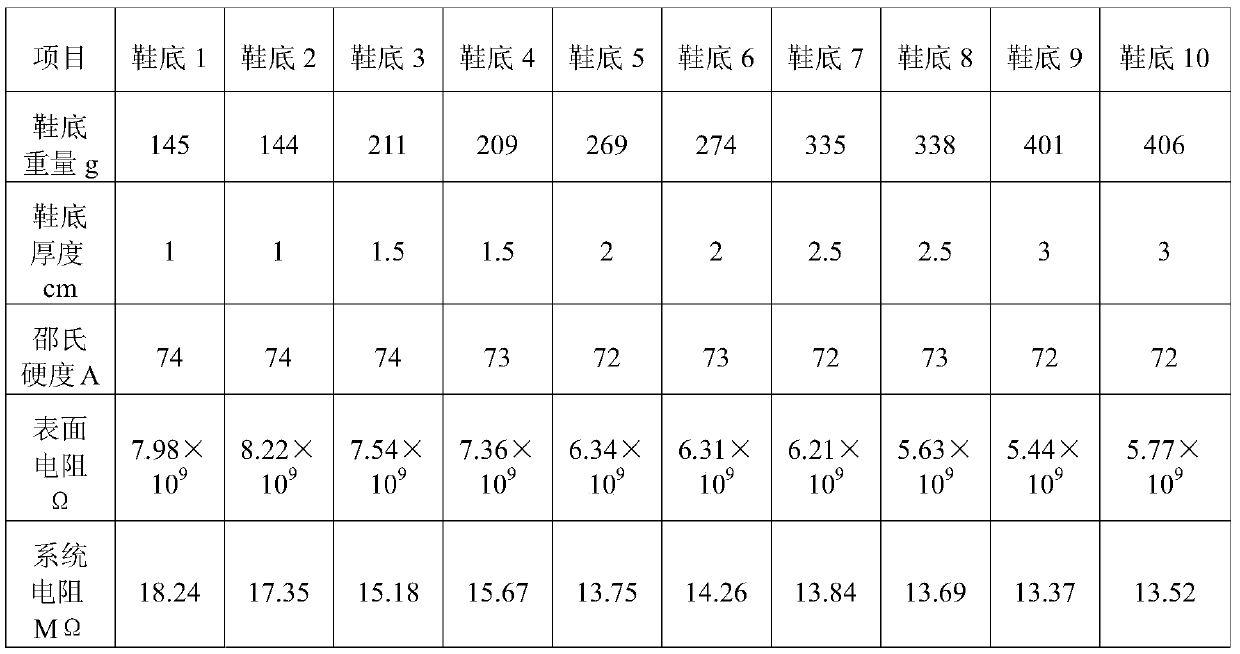Formula and process for manufacturing TPR antistatic soles and antistatic soles
A production process and anti-static technology, applied in shoe soles, footwear, footwear, etc., can solve the problems of high cost, environmental hazards in clean rooms, non-wear resistance, etc., and achieve good wear resistance, excellent anti-static performance, and reliable The effect of the solution
- Summary
- Abstract
- Description
- Claims
- Application Information
AI Technical Summary
Problems solved by technology
Method used
Image
Examples
Embodiment Construction
[0041] In order to make the purpose, technical solutions and advantages of the embodiments of the present invention clearer, a clear and complete description will be made below in conjunction with the technical solutions in the embodiments of the present invention. Obviously, the described embodiments are part of the embodiments of the present invention, and Not all examples. Based on the embodiments of the present invention, all other embodiments obtained by persons of ordinary skill in the art without making creative efforts belong to the protection scope of the present invention.
[0042] The TPR antistatic shoe sole of preferred embodiment of the present invention makes formula it comprises following component:
[0043] Styrene-butadiene-styrene block copolymer 40-46%;
[0044] Styrene-ethylene-butylene-styrene block copolymer 5-8%;
[0045] Styrene-butadiene copolymer 8-11%;
[0046] Ethylene-vinyl acetate copolymer 6-9%;
[0047] High impact polystyrene 5-8%;
[004...
PUM
| Property | Measurement | Unit |
|---|---|---|
| length | aaaaa | aaaaa |
| diameter | aaaaa | aaaaa |
| tensile strength | aaaaa | aaaaa |
Abstract
Description
Claims
Application Information
 Login to View More
Login to View More - R&D
- Intellectual Property
- Life Sciences
- Materials
- Tech Scout
- Unparalleled Data Quality
- Higher Quality Content
- 60% Fewer Hallucinations
Browse by: Latest US Patents, China's latest patents, Technical Efficacy Thesaurus, Application Domain, Technology Topic, Popular Technical Reports.
© 2025 PatSnap. All rights reserved.Legal|Privacy policy|Modern Slavery Act Transparency Statement|Sitemap|About US| Contact US: help@patsnap.com


